All I knew prior to my visit to Jaisalmer was that it was a major part of the Thar desert and had a fort.
Know much more now.
Jaisalmer fort is located in the heart of Thar desert and was built in 1156 AD by Rawal Jaisal after whom the city was named. It was declared a UNESCO heritage site in 2013.
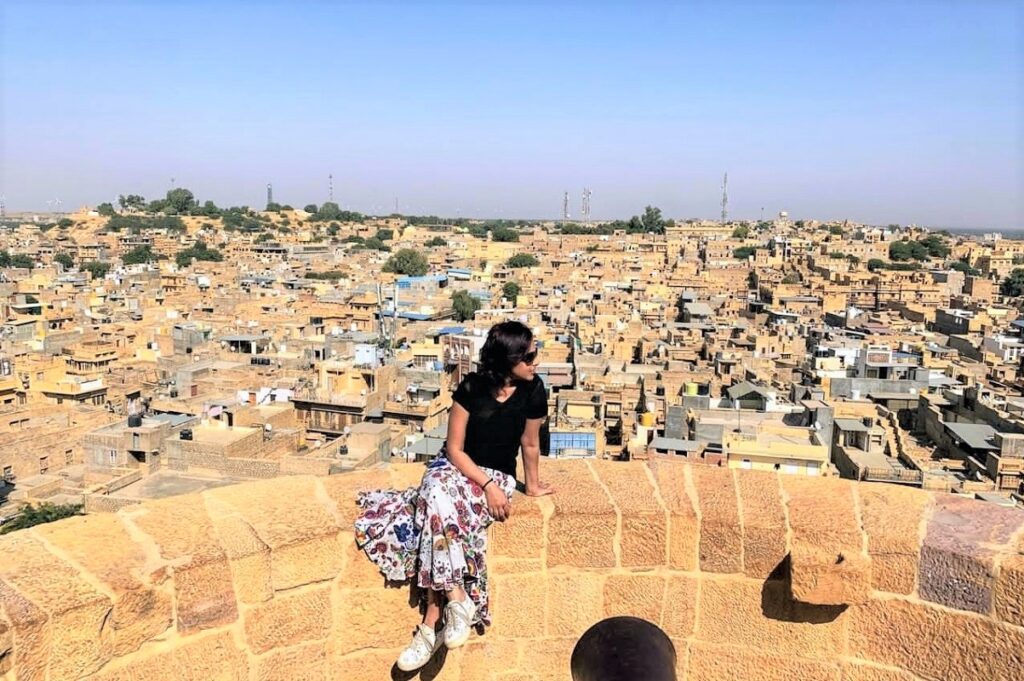
Contents
Rajasthan including Jaisalmer: Once Submerged Under Sea
Geologists have discovered fossils in parts of Rajasthan including Jaisalmer which indicate that the entire area was once submerged under the sea.
Approximate timeline suggests this to be 50 million years ago before the India-Eurasia collision.
Legend of Saraswati River
Once upon a time, Thar desert was a fertile plain fed by ancient river Saraswati.
The mystery of the extinct Saraswati river in one of the unsolved ones. As per vedic scriptures, river Saraswati once flowed through Jaisalmer and either gradually dried up or moved underground about 10,000 years ago.
There are many theories for the disappearance of this river.
Some say the river disappeared following a massive earthquake. Some say it disappeared due to the continuous rising of the continental plates. Some say it still flows underground and had gone into hiding to avoid unwanted attention of her creator Brahma who was awed by its beauty. Some say Goddess Saraswati was unable to carry the holy flame and walk on the earth, so she moved underground. Some say it simply dried up.
There were spots in Jaisalmer where there were reports of water oozing out with great pressure and some hydrologists believed it could be due to the underground Saraswati.
Apart from these spots, there are some regions in the Thar which are green even in the summer. They seem like fertile strips of land with sand dunes on either side. If the locals are to be believed, this strip was where Saraswati once flowed.
And probably still does so under the heap of sand.
Jaisalmer Fort Is a Living Fort
What is the typical vibe or picture that you would associate with an Indian fort? For me it is a place of solitude with massive huge empty spaces (except that view point/selfie point) and probably with some fluttering birds.
Not at Jaisalmer fort. This fort was buzzing.
It was more like entering a walled touristy market area entangled with residential lanes. My first impression was that of ‘neeche dukaan, upar makaan’.
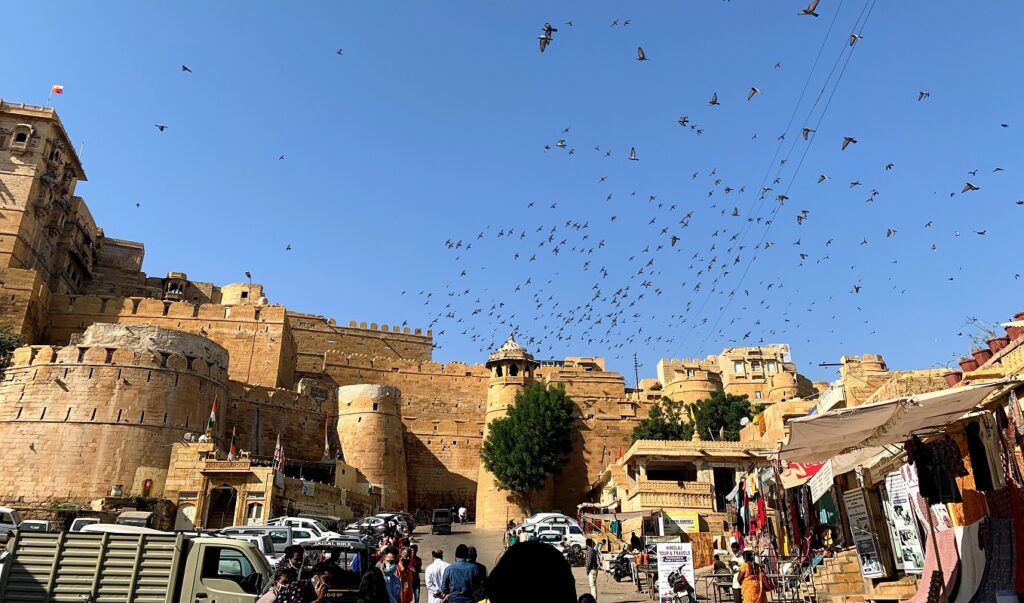
The shops sold everything touristy which included trinkets, ‘I love Rajasthan’ t-shirts, fossil stone glasses, magnets, keychains and colourful Rajasthani clothes.
This is the second oldest fort in Rajasthan and is amongst the very few inhabited forts in the world. Until about 17th century, the entire population of the city resided inside the fort.
Currently nearly 1/4th of the city’s population resides inside the fort.
Takeovers of Jaisalmer Fort
The fort was built in 1156 AD and was further strengthened by Rawal Jethsi who added bastions to the fort. Around 1294 AD, the fort saw a 8-9 year siege by Alahuddin Khilji. By the end of this siege, once the defeat of Rajputs was inevitable, the women committed ‘jauhar‘ (mass self-immolation). Khilji ruled this fort for 9 years following which it remained abandoned for a few years before it was reclaimed by some surviving Rajputs.
In the 15th century, when the Rajputs were under attack by Amir Ali and were close to defeat, Rawal Lunakaran slaughtered the women himself as there wasn’t enough time to arrange a jauhar. Sadly, soon after this act, reinforcements arrived and Amir Ali was defeated.
The fort later went to the Mughals who ruled it until 1762 following which Maharawal Mulraj took control which later passed on to his grandson Gaj Singh.
Jaisalmer Used To Be a Trade Centre
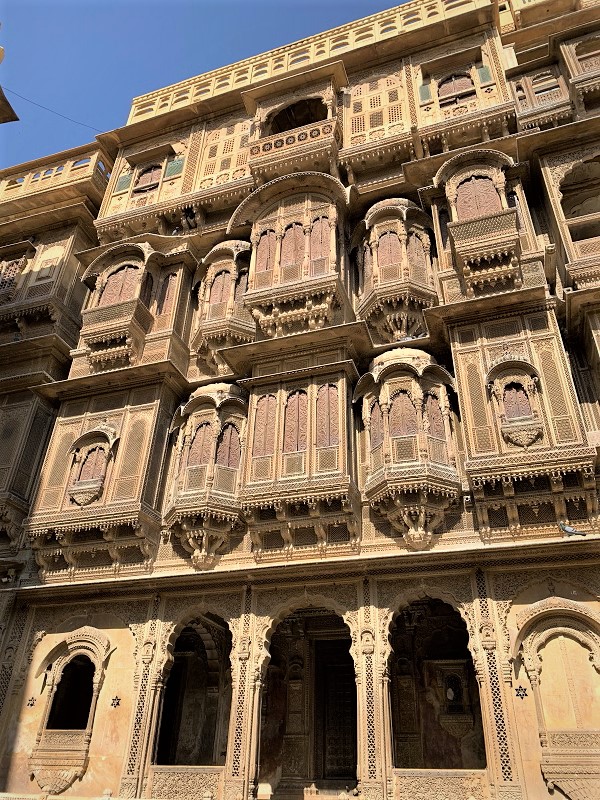
Once upon a time, Jaisalmer served as a trade centre due to its location of being situated on the trade route connecting the west to China.
Most merchants at that time preferred to use the southern route via India instead of travelling through the treacherous central Asia mountains.
One such rich family of traders was the Patwas. Ghuman chand Patwa who was the head of the Patwa family built the famous ‘patwon ki haveli’ which is a cluster of 5 havelis – one for each of his sons.
During the rule of British, the trade centre was moved from Jaisalmer to Bombay which led to the gradual decline in the economy of Jaisalmer and after the partition of India, this route was completely closed.
Old Capital City: Lodhurva
Lodhurva was the old capital of Bhatti rajputs. This city was along the wealthy silk route which is why it attracted a lot of thieves who would destroy the city and damage the Jain temples.
Tired of all this, Rawal Jaisal decided to move the capital away from Lodhurva.
As per legends, a local hermit had recommended Trikuata hill to the rawal as that spot was praised by Lord Krishna. The Rawal paid heed to the advice and built the fort on the same hill and named Jaisalmer as the new capital.
Story of Jain temples In The Jaisalmer Fort
Due to the flourishing trade along the silk route, the Bhatti traders had become super wealthy. They now had much more wealth than the king.
It is said that the traders stuck a deal with Rawal Jaisal to have seven Jain temples constructed inside the fort which would protect the temples and the very important Jain Tirth. In return, they contributed financially to the construction of the fort.
This worked in the favour of both sides.
15 Km Tunnel Connecting Jaisalmer And Lodurva
It is said that in the basement of the main Jain temple (Parswanath Bhagwan’s temple), there is a tunnel which is said to be ~15 km long which is connected to the old capital city of Lodurva.
The tunnel is now blocked.
Jaisalmer – Alternate names
Due to the yellow sandstone used throughout the architecture of the fort as well as the town, Jaisalmer is referred to as the ‘Golden city of India’ while the Jaisalmer fort is referred to as the ‘Golden fort’ or ‘Sonar Quila’
To best way to see why the fort is referred to as the ‘golden fort’ is to view it from Vyas ki chhatri as from that point the sunlight directly falls on the fort giving it that perfect golden hue.
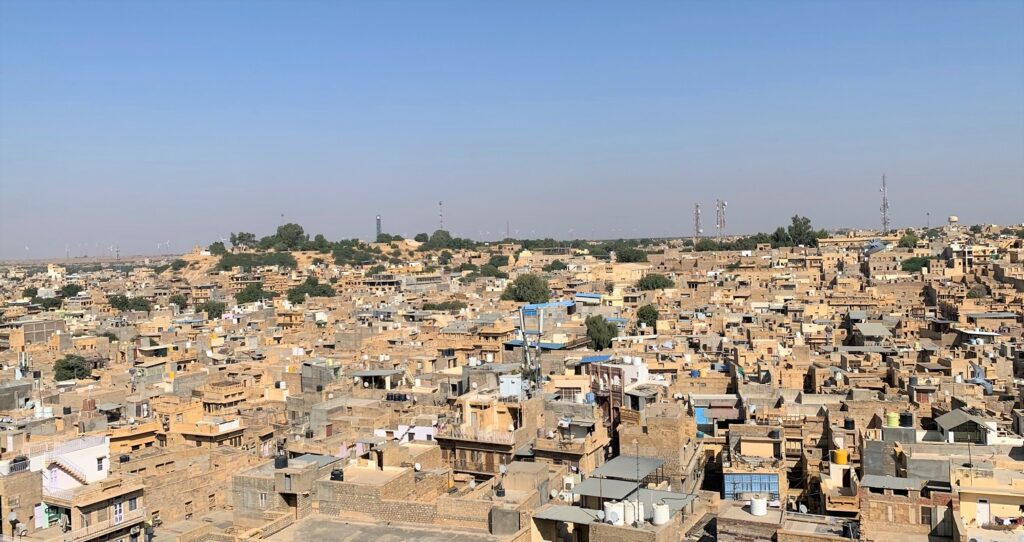
Thar Desert: Most Widely Populated Desert in the World
Thar Desert also known as ‘The Great Indian Desert’ forms 5% of the total Indian geographical area.
Of the total desert area, 85% falls under India while 15% is in Pakistan.
This is the most densely populated desert in the world with agriculture and animal husbandry being the main occupation.
And the credit for this goes to the infrastructure, roads and some availability of water (mainly due to Indira Gandhi Canal).
The region of Thar that I saw was unlike a typical desert.
The landscape was mostly flat barren land with some grasslands, arid scrubs, farmland, villages, windmills and few sand dunes.
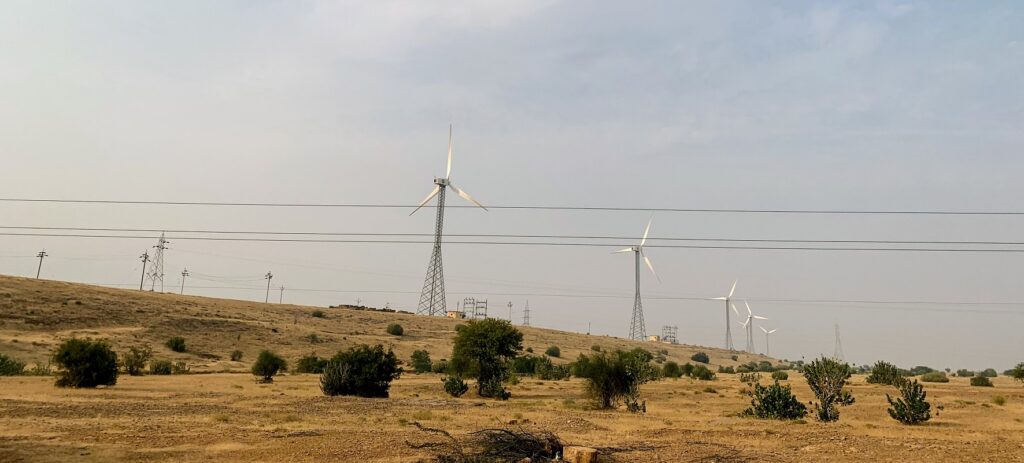
Population increase
During independence of India in 1947, the population of Jaisalmer was 30,000 and currently the population is about 600,000
That is a massive jump and there is only one reason for this increase.
Availability of water.
All the houses in the fort now have water available at the turn of a tap and all the modern toilet facilities which has resulted in quite a few hotels opening up inside the fort to give the ‘authentic royal experience’.
Unfortunately, the increased water supply was not balanced out with better drainage facilities. Today, excess water threatens the fort’s very existence.
Downside of Population Increase
The increase in population and water availability has taken a toll on the old fort.
Since the increase in population of Jaisalmer has grown manyfold, the stress on the city’s infrastructure is evident. Some of the major concerns are water seepage, illegal construction, unchecked encroachment, seismic activity, tourism boom and dilapidated houses.
Jaisalmer fort was built on a weak sedimentary rock hill due to which the foundation of this fort is extremely vulnerable to seepage. Added to this is the issue of a weak drainage system which directly leaks water from the houses into the foundation of the fort and loosens the stone.
The fort also falls in a seismic zone and three fault lines pass under the fort making it prone to tremors. This fort was significantly damaged during the 2001 Gujarat earthquake.
In 1999, two bastions and some part of the fort wall collapsed raising worldwide concerns.
The fort has seen more than its share of earthquakes, heavy rainfall, wars, famines and sandstorms and has survived through all of them. However, it now shakes and crumbles.
Indira Gandhi Canal: Reason for abundance of water
This 650 km canal is the longest canal in India which starts from Punjab, then goes into Haryana and finally ends in the Thar desert.
It was previously known as ‘Rajasthan canal’ and was renamed as Indira Gandhi canal following the assassination of former Prime minister of India: Indira Gandhi
Movies Shot at Jaisalmer
Jaisalmer being one of the very few touristy desert cities of India, is quite a popular location for movie shootings. The Hawelis and majestic palaces are an added advantage.
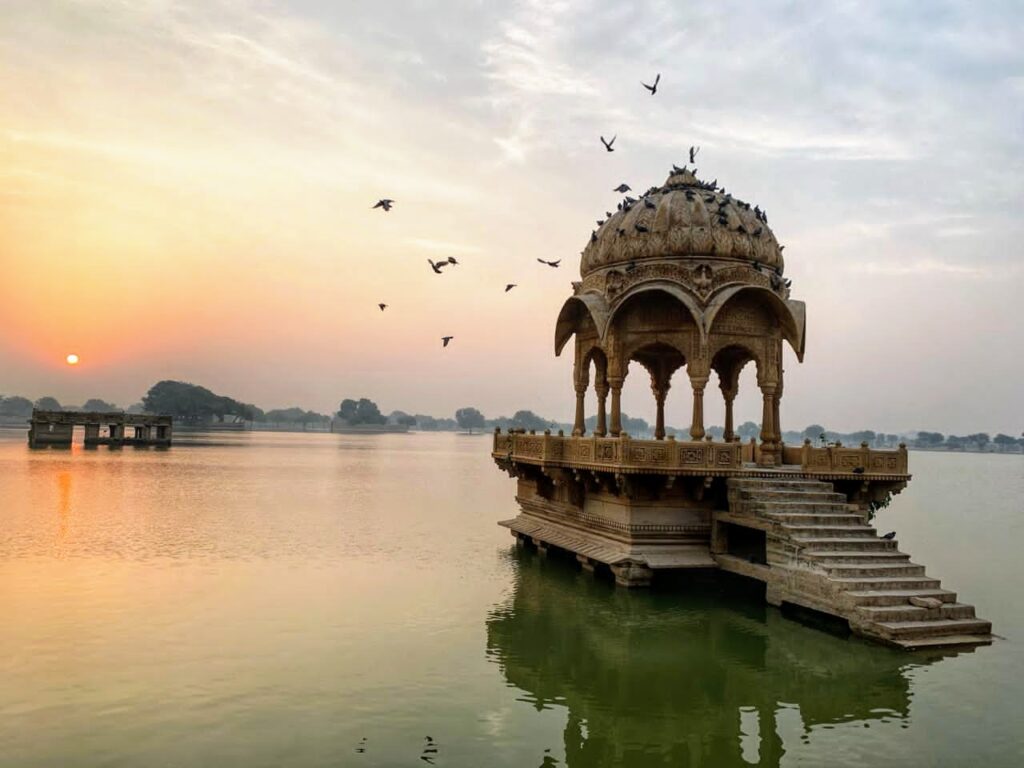
Some of the famous movies shot here are:
- Border – shot at Longewala border
- Airlift
- Rangeela : the song ‘Hai rama ye kya hua‘
- Parched
- Bajrangi Bhaijaan
- Hum Dil De Chuke Sanam (1999) – most parts of the first half of this movie were shot at Bada Bagh while the famous song Tadap Tadap was shot in the desert
- Parmanu
- Dor (2006)
- Nanhe Jaisalmer (2007)
- Rudaali
Kuldhara – The Haunted Village
Kuldhara is a village located ~15 km to the southwest of Jaisalmer city.
This was inhabited by Brahmins from Pali called ‘Paliwals’ who abandoned the village overnight in 19th century and disappeared. The reason for this abandonment is not clear – though there are quite a few theories.
Some say it was due to water scarcity while some say it was due to the exorbitant taxes levied by the then minister Salim Singh while some say it was due to an earthquake.
There is also a theory (most popular one) that Salim Singh fell for a beautiful girl from this village and sent his men to fetch her.
The villagers asked the men to return the next morning and that very night, all the villagers abandoned the village.
It is said that while leaving the village, paliwals cursed it saying that no one would be able to re-occupy that town. And as per legends, people who tried to settle into this town experienced paranormal activity.
Soon, the abandoned village acquired the tag of being haunted and started attracting tourists.
2 thoughts on “15 Interesting Facts About Jaisalmer I Learnt From My Road Trip”
Leave a Reply
Recent Posts
Recap: After conquering a grueling 17-hour marathon on the road, punctuated by a stubborn car breakdown, my mom and I finally arrived at Jodhpur for my cousin's wedding; albeit 6 hours late. Read...
In mid December 2023, my cousin was to get married in Jodhpur – it was a destination wedding spread over 3 days with multiple events. And I should add, this was my first destination...

I’m glad Indian women are winning their right to Independence. We were in Jaisalmer during the earthquake in 2001. We were having breakfast on the roof of ‘The Desert Boys Hotel’ when it happened. We were sat adjacent to a concrete water tank. At first we thought the tank was filling! We were sorry to hear Salim Singh Haveli got damaged. We had a really good time during our three months in India..
I am glad you had a good time in India. It is a beautiful country.
The 2001 Gujarat earthquake was an unfortunate incident – glad you were in a safer area.